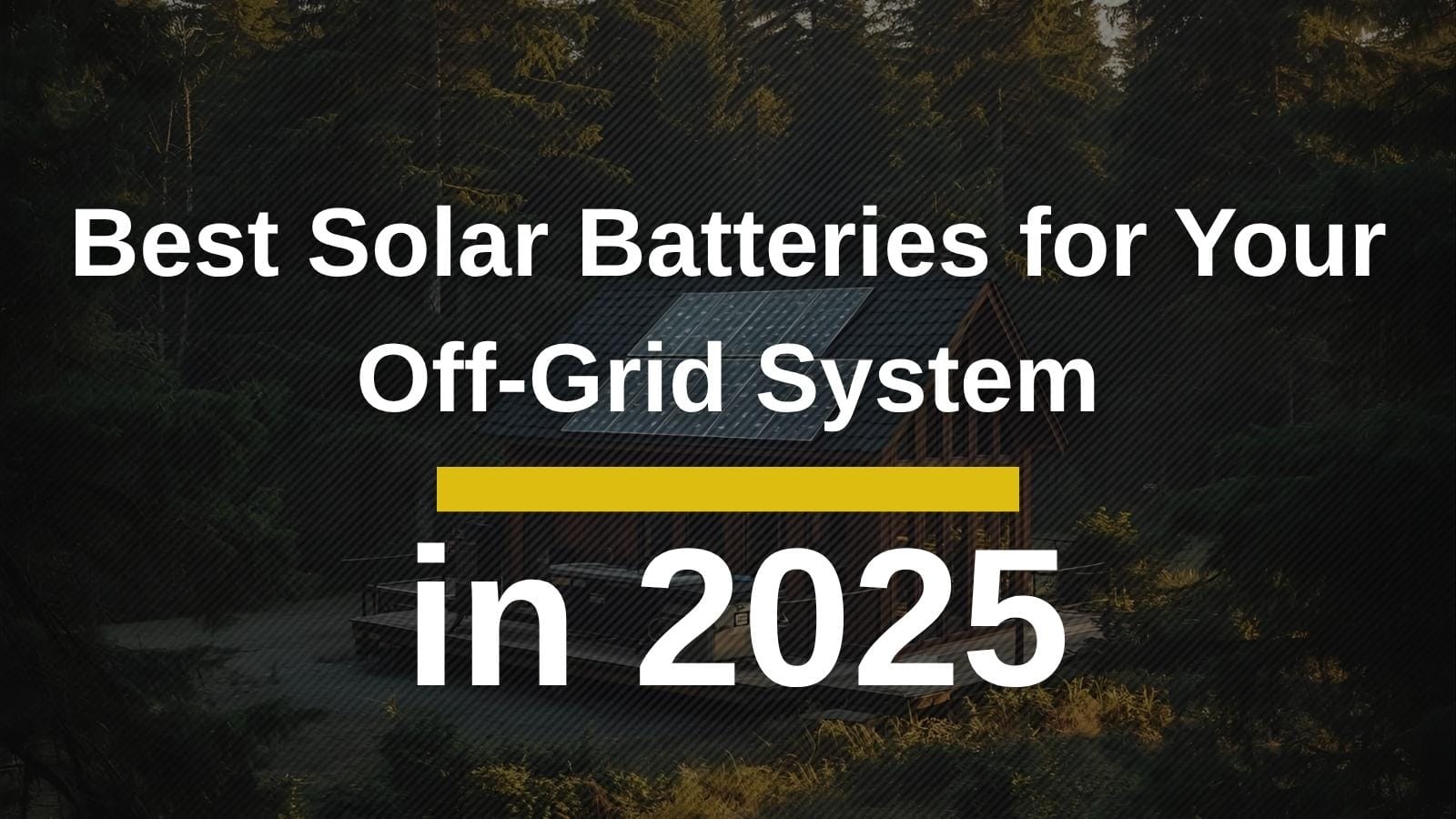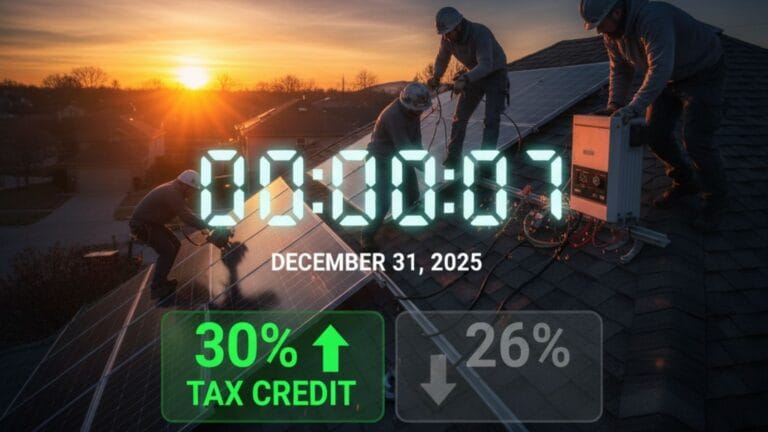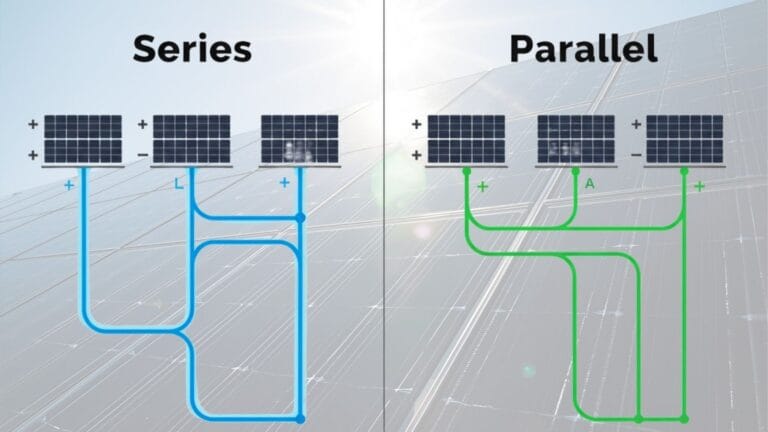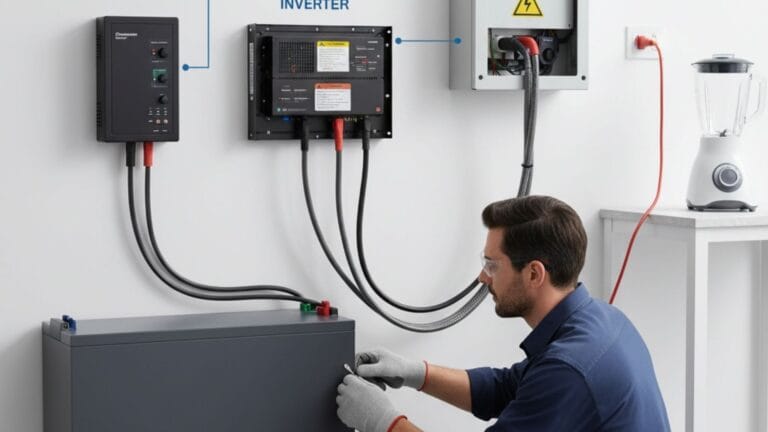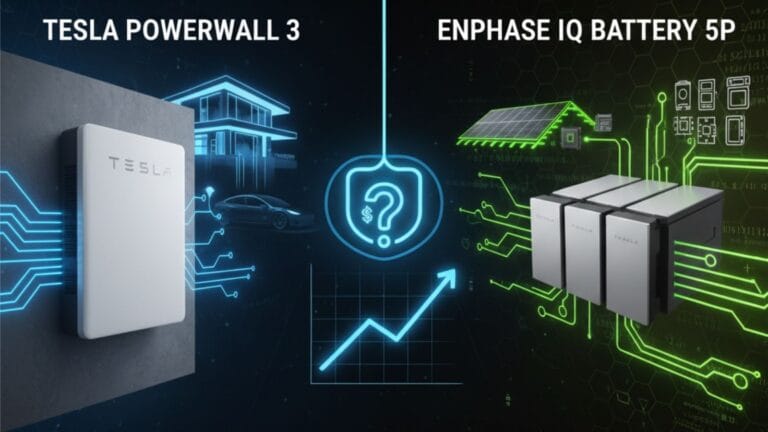Best Solar Batteries for Your Off-Grid System in 2025
For those pursuing a life of true energy independence, an off-grid solar system is the ultimate goal. It’s a self-contained power station that frees you from utility bills, grid failures, and reliance on fossil fuels. But while solar panels are the visible generators of this freedom, the silent, hardworking heart of your entire system is the battery bank. Choosing the best solar batteries for your off-grid system is arguably the most critical decision you will make, directly impacting your system’s reliability, longevity, and overall performance.
In 2025, the battery market is more advanced than ever, but the abundance of options can be paralyzing. From traditional lead-acid workhorses to the high-tech lithium-ion powerhouses, each technology comes with its own set of trade-offs in cost, performance, and maintenance. Picking the wrong battery can lead to a frustratingly short lifespan, insufficient power, and a poor return on a very significant investment.
This ultimate guide is designed to demystify the world of off-grid energy storage. We’ll provide a deep-dive comparison of the leading battery chemistries, break down the essential technical specifications you must understand, and offer expert recommendations to help you select the perfect battery bank to power your off-grid dream for years to come.
The Great Divide: Lead-Acid vs. Lithium-Ion Batteries
At the highest level, the off-grid battery debate comes down to two major families of technology: the long-established lead-acid batteries and the modern lithium-ion batteries. Understanding their fundamental differences is the first step to making an informed choice.
Lead-Acid Batteries: The Traditional Workhorse
Lead-acid is a 150-year-old technology that has been the backbone of the off-grid world for decades. These batteries work by submerging lead plates in a sulfuric acid electrolyte. They are heavy, require maintenance, but have a proven track record and a low upfront cost. There are two main types used in solar applications:
- Flooded Lead-Acid (FLA): These are the most traditional and lowest-cost solar batteries. They require regular maintenance, including checking water levels and equalizing the cells, and must be installed in a well-ventilated area to allow gases to escape during charging.
- Sealed Lead-Acid (SLA): These are maintenance-free versions, including Absorbent Glass Mat (AGM) and Gel types. They are safer to handle and don’t require watering, but they come at a higher price point and are more sensitive to overcharging than their flooded counterparts.
Lithium-Ion Batteries: The Modern Powerhouse
Lithium-ion is the technology that powers everything from your smartphone to electric vehicles. In the off-grid world, the most common and safest chemistry is Lithium Iron Phosphate (LiFePO4). These batteries are lightweight, compact, highly efficient, and require no maintenance, making them the new gold standard for serious off-grid systems.
Head-to-Head: Key Metrics for Comparing Off-Grid Batteries
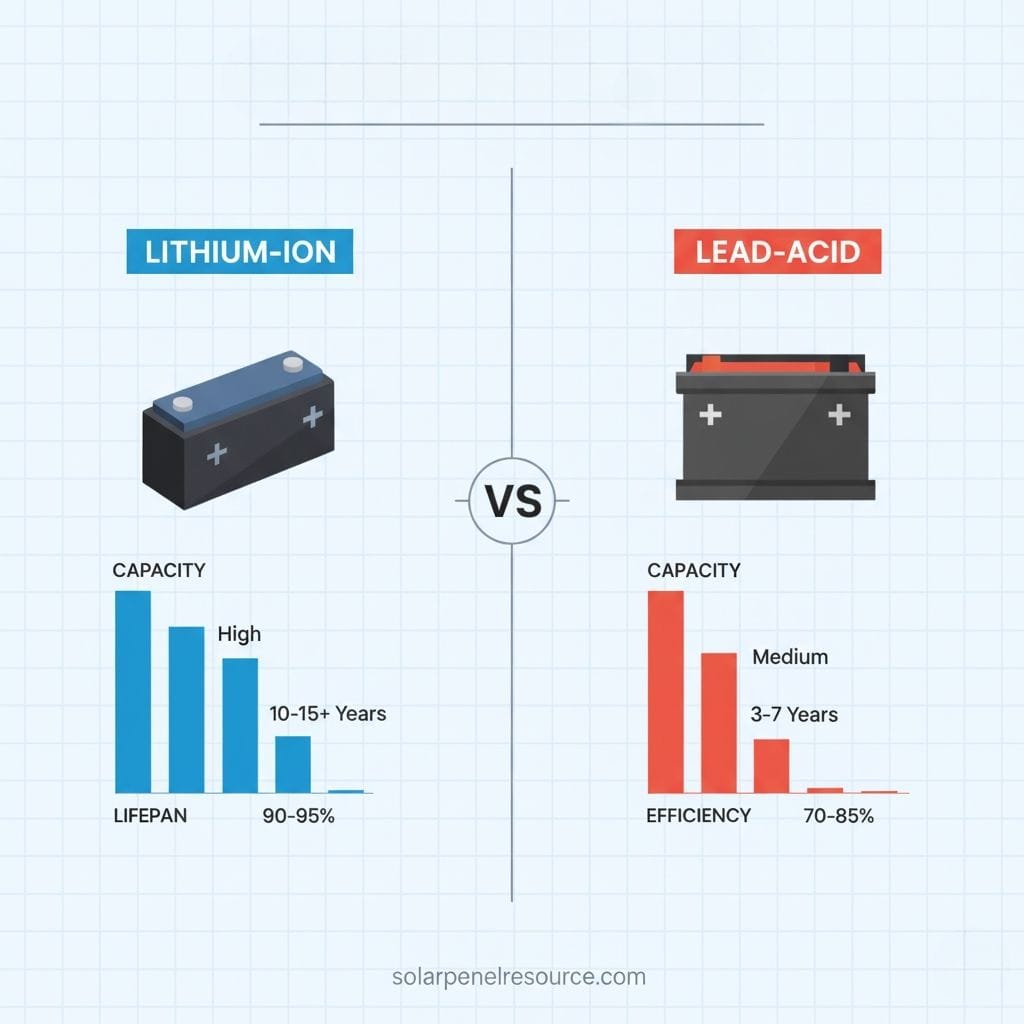
To truly understand the lead-acid vs. lithium battery debate, we need to compare them across the metrics that matter most for an off-grid user. This isn’t just about which is “better,” but which provides the best long-term value and reliability for your specific needs.
1. Depth of Discharge (DoD) and Usable Capacity
This is perhaps the most crucial and often misunderstood metric. Depth of Discharge refers to the percentage of the battery’s total capacity that can be safely used without causing damage.
- Lead-Acid: Has a recommended DoD of only 50%. Draining a lead-acid battery beyond this point will dramatically shorten its lifespan. This means a 400 Amp-hour (Ah) lead-acid battery bank only provides 200 Ah of usable energy.
- Lithium (LiFePO4): Can be safely discharged to 80-100% of its capacity. A 400 Ah lithium battery bank provides at least 320 Ah of usable energy.
Winner: Lithium. You have to buy nearly double the rated capacity in lead-acid batteries to get the same usable energy as lithium, which has a major impact on cost and physical footprint.
2. Lifespan and Cycle Count
A battery’s lifespan is measured in charge/discharge “cycles.” One cycle is a full charge followed by a discharge. The more cycles a battery can handle, the longer it will last.
- Lead-Acid: A quality deep-cycle lead-acid battery might last anywhere from 500 to 1,500 cycles when properly maintained and kept at a 50% DoD. This translates to a typical lifespan of 3-7 years.
- Lithium (LiFePO4): A standard LiFePO4 battery is rated for 3,000 to 7,000+ cycles. This translates to a lifespan of 10-20 years or more, often outlasting the solar panels themselves.
Winner: Lithium. The longevity of lithium batteries is vastly superior, which is a key factor in their excellent long-term value.
3. Efficiency
Round-trip efficiency measures how much power you get out versus how much you put in. Inefficient batteries waste your precious solar energy as heat during charging and discharging.
- Lead-Acid: Suffers from significant energy loss, with a typical round-trip efficiency of ~80-85%. This means for every 100 watts of solar power you generate, you only get to use 80-85 watts.
- Lithium (LiFePO4): Is extremely efficient, with a round-trip efficiency of 95% or more. This means less of your solar generation is wasted, allowing you to charge your bank faster and get the most out of every sunbeam.
Winner: Lithium. Higher efficiency means you can potentially use a smaller, less expensive solar array to achieve the same charging results.
4. Upfront Cost vs. Lifetime Cost (Levelized Cost of Storage)
This is where the decision gets interesting. Lead-acid has a clear advantage in initial price, but lithium often wins on long-term value.
- Lead-Acid: Has a low upfront cost, typically $150 – $250 per kilowatt-hour (kWh) of capacity.
- Lithium (LiFePO4): Has a higher upfront cost, typically $400 – $600 per kWh of capacity.
However, the true cost should be measured by the “Levelized Cost of Storage” (LCOS), which is the total cost divided by the total energy the battery will provide over its lifetime. Because lithium batteries last 5-10 times longer and have a greater DoD, their LCOS is often significantly lower than lead-acid. You might have to replace your lead-acid bank 3 or 4 times in the same period you would own one lithium bank.
Winner: Lead-Acid (Upfront Cost) / Lithium (Lifetime Cost). If your budget is extremely tight for the initial purchase, lead-acid is the only option. But for the best long-term financial value, lithium is the clear winner.
5. Maintenance and Safety
An off-grid system should provide peace of mind, not a constant maintenance headache.
- Lead-Acid (Flooded): Requires regular maintenance, including checking and refilling distilled water levels, cleaning terminals to prevent corrosion, and performing periodic equalization charges. They also vent explosive hydrogen gas during charging and must be stored in a ventilated, non-living space.
- Lithium (LiFePO4): Is completely maintenance-free. They are sealed units that do not vent gas. A quality LiFePO4 battery with an integrated Battery Management System (BMS) is extremely safe, as the BMS protects against overcharging, over-discharging, and overheating.
Winner: Lithium. The “install and forget” nature of LiFePO4 batteries is a massive quality-of-life advantage and a significant safety improvement.
Top Off-Grid Solar Battery Brands to Consider in 2025
Several reputable brands have established themselves as leaders in the off-grid energy storage market. The U.S. National Renewable Energy Laboratory (NREL) is a leading source for research on energy storage, and their work highlights the rapid advancements in battery technology. When shopping, look for brands with a proven track record and strong warranties.
Leading Lithium (LiFePO4) Brands:
- Battle Born Batteries: A US-based company with a stellar reputation for quality, durability, and outstanding customer support. They are a premium choice for serious off-grid systems.
- Victron Energy: A high-end Dutch brand known for its complete ecosystem of top-tier solar components, including their smart LiFePO4 batteries that integrate seamlessly with their inverters and charge controllers.
- EG4 Electronics: A brand that has gained massive popularity for its server-rack style LiFePO4 batteries. They offer an incredible value proposition, providing large amounts of storage at a very competitive price point.
- Renogy: A popular choice in the DIY community, offering a range of affordable and reliable LiFePO4 batteries that are great for smaller to mid-sized systems.
Leading Lead-Acid Brands:
- Trojan Battery Company: A legendary name in deep-cycle batteries, their flooded lead-acid batteries have been the go-to for off-grid homesteaders for decades.
- Rolls-Surrette: Another top-tier manufacturer of heavy-duty, industrial-grade flooded lead-acid batteries designed for longevity in demanding solar applications.
The Verdict: What’s the Best Solar Battery for Your System?
After comparing the technologies across all key metrics, a clear picture emerges for 2025.
For the vast majority of new off-grid systems, Lithium Iron Phosphate (LiFePO4) is the best choice. The combination of a massive cycle life, high efficiency, 100% maintenance-free operation, and superior safety profile provides an unparalleled user experience and the best long-term financial value. The higher upfront cost is an investment that pays for itself over the life of the system.
Lead-acid batteries still have a place, but it is a shrinking niche. You might choose lead-acid if:
- Your upfront budget is extremely constrained and you cannot afford the initial cost of lithium.
- You have a small, intermittent-use system (like a weekend cabin) where the batteries will not be cycled daily.
- You are an experienced user who is comfortable with the required maintenance and safety protocols for flooded lead-acid batteries.
Investing in a Decade of Reliable Power
Choosing your off-grid solar batteries is a long-term commitment. While the allure of lead-acid’s low upfront cost is tempting, the data on lifespan, usable capacity, and efficiency points to a clear winner for the modern era. An investment in a quality LiFePO4 battery bank is an investment in a decade or more of hassle-free, reliable, and efficient power. By carefully assessing your energy needs and prioritizing long-term value over short-term savings, you can build an energy storage system that will be the silent, dependable heart of your off-grid independence for years to come.

Solar Energy Enthusiast & Renewable Energy Researcher
Vural’s journey into solar energy began four years ago, driven by frequent power outages and high electricity bills at his own home. He has since gained hands-on experience with both personal and commercial solar projects. At solarpanelresource.com, Vural shares his real-world insights and in-depth research to guide homeowners and business owners on their own path to energy independence.

